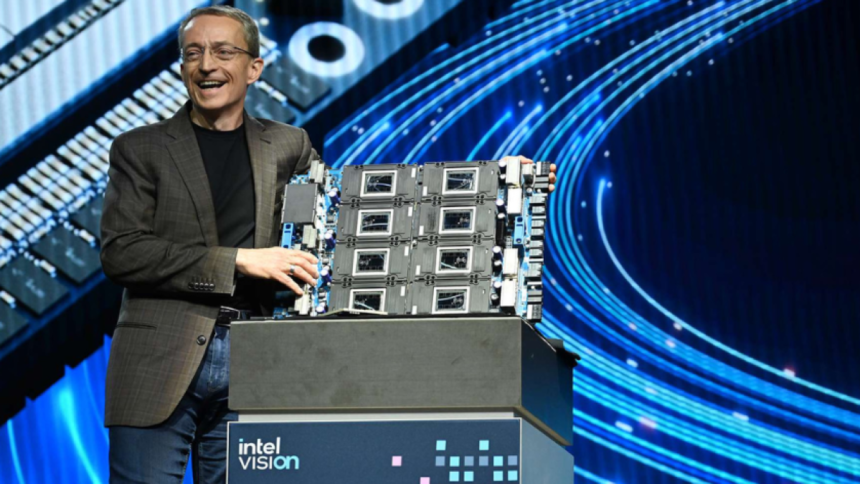Intel CEO Pat Gelsinger, a name that became synonymous with leadership at Intel Corporation, has decided to step down after nearly four years at the helm. His resignation, effective December 1, 2024, comes after a difficult decision made in collaboration with the company’s board of directors. At 63, Gelsinger was reportedly given the option to either retire voluntarily or be removed from his position. After reflecting on his journey, Gelsinger chose the path of retirement.
In this article, we will explore the reasons behind Intel CEO Pat Gelsinger’s departure, his legacy at Intel, and what the future holds for the company as it moves forward under new leadership.
A Bittersweet Farewell: Gelsinger’s Legacy at Intel
Intel CEO Pat Gelsinger‘s departure is undoubtedly bittersweet. His career at Intel spans over four decades, starting back in 1979 when he first joined the company. In a heartfelt LinkedIn post, Gelsinger expressed his gratitude, describing his role as CEO as “the honour of my lifetime.” His leadership, during both good and challenging times, has been pivotal in Intel’s ongoing evolution. Yet, despite the years of loyalty and hard work, Gelsinger acknowledged that it was time to pass the torch.
He reflected on Intel’s contributions to the world, proudly stating, “I can look back with pride at all that we have accomplished together.” For Gelsinger, Intel wasn’t just a job—it was a lifelong passion. But the company has undergone significant changes under his watch, and the decision to leave wasn’t made lightly.
Why Did Gelsinger Step Down?
Reports suggest that the board of Intel had lost confidence in Gelsinger’s strategy, particularly in Intel’s ability to regain market share and compete with rivals such as Nvidia. Throughout Gelsinger’s tenure, Intel faced tough challenges as competitors, including Nvidia, ramped up their innovation in the semiconductor space, particularly in the realm of AI and high-performance computing.
The board’s decision to offer him a choice between voluntary retirement or being removed signals that Intel‘s leadership may require a new direction—one that aligns better with the rapidly changing market conditions. This strategic disconnect led to a tough decision that Gelsinger ultimately chose to retire.
Intel’s Transitional Leadership: Who Takes Over?
In the wake of Intel CEO Pat Gelsinger’s resignation, the company has appointed two senior executives, David Zinsner and Michelle Johnston Holthaus, as interim co-CEOs. Zinsner, Intel’s CFO and executive vice president, and Holthaus, who heads Intel’s product division, will lead the company through this transitional period.
Additionally, Frank Yeary, Intel’s independent board chair, will serve as interim executive chair. This leadership team will be responsible for guiding Intel through this uncertain time while a search for a permanent CEO is underway.
Pat Gelsinger’s Impact on Intel: A Technological Visionary
While his time as CEO was marked by challenges, Intel CEO Pat Gelsinger leaves behind a remarkable legacy in the world of semiconductor technology.
One of his major accomplishments was the revitalization of Intel’s semiconductor manufacturing processes,
which saw massive investments in cutting-edge chip technology.
His leadership and vision to reinvigorate Intel’s manufacturing capabilities were crucial in keeping the company competitive amidst fierce industry rivals.
Under his guidance, Intel pushed forward with innovations in process technology and invested in state-of-the-art semiconductor fabs. However, despite these efforts, Intel struggled to keep up with the pace set by rivals like Nvidia and TSMC.
Intel’s Future: Will the Company Continue to Innovate?
As Intel CEO Pat Gelsinger steps down, Intel must confront the realities of a rapidly shifting market. The demand for more advanced chips, particularly those used in AI and machine learning, is higher than ever.
Will Intel continue to lead the charge in semiconductor innovation, or will it fade further into the background?
The new leadership team, under Zinsner and Holthaus, must ensure that Intel remains at the forefront of the tech industry.
This will require not only innovation but also a shift in strategy to better compete with the likes of Nvidia and other players in the semiconductor market.
Intel Stock: What Happens Next?
One of the most immediate concerns for investors is the impact of Gelsinger’s departure on Intel stock. Over the past few years, Intel stock has fluctuated as the company has worked to regain its competitive edge. The uncertainty surrounding the company’s leadership may have an effect on Intel stock price in the short term,
but the long-term outlook will depend heavily on the actions of Intel’s new leadership.
Investors will likely keep a close eye on Intel stock as the company transitions to its next phase.
Will INTC stock rebound with new leadership, or will Intel continue to struggle in the face of fierce competition?
What’s Next for Intel’s Innovation Strategy?
Under Intel CEO Pat Gelsinger, the company invested heavily in R&D to stay ahead of its competitors. As Intel moves forward without Gelsinger, it will need to continue these investments while also adjusting its strategy to better align with the changing tech landscape. Specifically, the rise of artificial intelligence, edge computing, and other next-gen technologies presents both challenges and opportunities for Intel.
The key question now is whether Intel can maintain its focus on innovation and regain its leadership in the semiconductor market.
The new CEO will have to make bold decisions to keep Intel competitive and relevant in an industry that is evolving faster than ever.
Pat Gelsinger’s Personal Reflection: A Career Well-Spent
For Intel CEO Pat Gelsinger, stepping down marks the end of an incredible career. His contributions to the tech industry and Intel’s growth are monumental. Yet, as he reflects on his journey, it’s clear that his connection to Intel goes beyond just business.
He’s expressed his deep appreciation for his colleagues, calling them part of the Intel “family.” Even as he leaves the CEO role,
his legacy will continue to influence the company.
Read More: Varun Beverages GST: The Surge in Searches and Its Potential Impact
Conclusion
With Intel CEO Pat Gelsinger stepping down, a new chapter begins for the company. While Gelsinger’s leadership was pivotal during a challenging period,
Intel must now chart a course for the future under new guidance. The semiconductor industry is in a constant state of flux, and Intel will need to adapt quickly to maintain its position as a leader in the field.
As the world watches how Intel navigates this transition, one thing is clear:
The company’s future depends on bold leadership, continued innovation, and a strategic approach to competing in a rapidly changing market.










